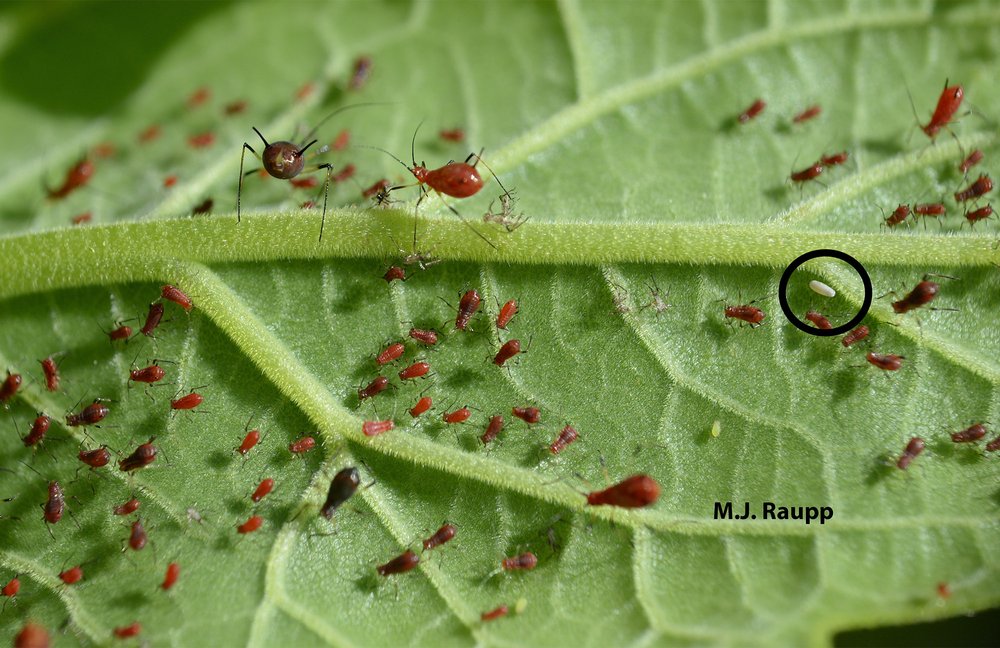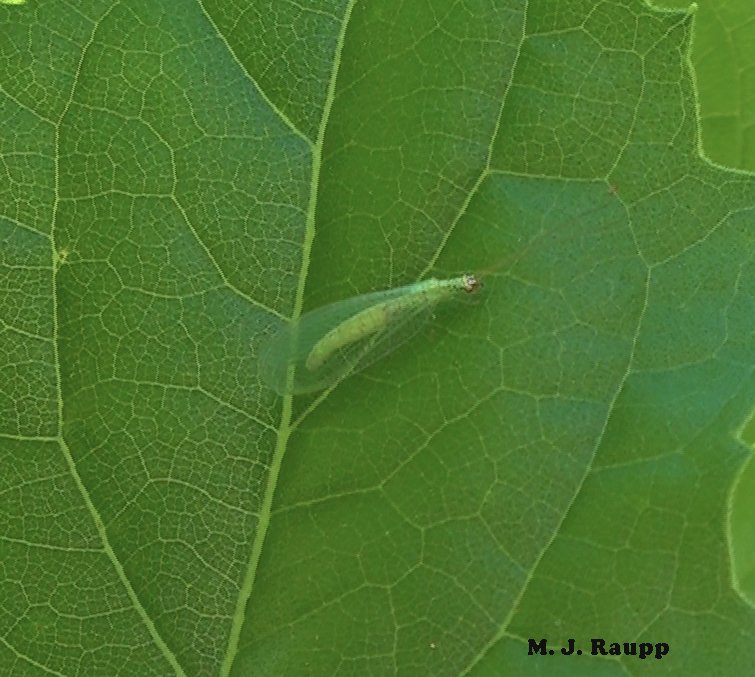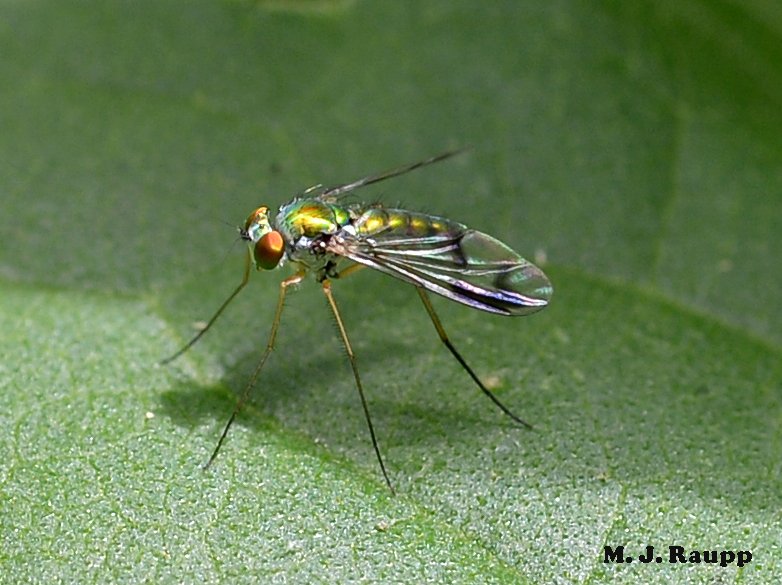
Colonies of brown ambrosia aphids are manufacturing legions of hungry predators ready to sally forth and feast on other pests in my garden. Although an adult flower fly was not sighted, her telltale egg (inside the circle) in the aphid colony confirms her visit and spells trouble for aphids in just a few days when her predatory larva hatches.
One of the best performers in my flower bed is a raucous native plant known as cup plant, Silphium perfoliatum, a premier attractor of insects to the garden. Extravagant floral displays provide nectar and pollen to a wide variety of bees, butterflies, and wasps. Nutrients coursing through vascular vessels support several species of sucking insects including leafhoppers, treehoppers, and aphids. And where there are abundant juicy prey items, there are predators, lots of them.

This little Cycloneda lady beetle has her jaws wrapped around a juicy brown ambrosia aphid.

Early one morning this pretty green lacewing adult stopped by an aphid-infested cup plant. How soon will her meat-eating youngsters appear in the aphid colony?
The featured insect this week is the brown ambrosia aphid, whose populations have exploded on my cup plants. As the name implies, this aphid is found on a wide variety of plants in the Asteraceae family including black-eyed Susan, coneflower, and sunflower in addition to cup plant. Like many of their kin, in summertime these gals are parthenogenic, like the Amazons in Greek mythology, an all-female society reproducing without the assistance of males. One of the most fascinating behaviors found in aphids on my cup plant and other Uroleucon aphids is a synchronized twitching response when the colony of aphids is disturbed. On several mornings last week when visiting the cup plant with a cup of coffee in hand, I was greeted by mass displays of dancing aphids as I approached the plant. Clever studies of a related species of Uroleucon revealed a synchronous “collective twitching and kicking response”, a.k.a. “CTKR”, when an object like a pencil or a predator like a lady beetle was in visual range of the colony. Gentle vibrations of the substrate upon which the colony rested also evoked the CTKR. These coordinated defenses reduced successful attacks by tiny parasitic wasps that use aphids as hosts for their young.
Gentle taps on the cup plant leaf sends the colony of brown ambrosia aphids into paroxysms of synchronized twitching. This behavior may ward-off attacks by tiny parasitic wasps or small predators.
While collective twitching proved effective against some enemies of aphids, colonies of aphids on my cup plant are now besieged by legions of hungry lynx spiders, lady beetles, flower flies, long-legged flies, and lacewings. The synchronized defense of hapless aphids can’t stop these fierce tiny predators from taking their toll. While this is bad news for the aphids, this is good news for my garden. The aphids have become a feeding factory for many species of predators that will move on to other plants in my landscape once the brown ambrosia aphids are kaput, all part of Mother Nature’s plan for a more sustainable landscape.

Lynx spiders like this male Oxyopes find aphids irresistibly tasty any time of day.

Long-legged flies prowl leaves of cup plant in search of prey.
Acknowledgements
We thank Drs. Gary Miller and Jeff Shultz for identifying prolific brown ambrosia aphids and the cool male lynx spider, respectively. Dr. Paula Shrewsbury created this story by planting silphium and identified the pretty polished lady beetle. The fascinating account of defensive behaviors in aphids entitled “Collective Defense of Aphis nerii and Uroleucon hypochoeridis (Homoptera, Aphididae) against Natural Enemies” by Manfred Hartbauer was consulted to prepare this episode.
No comments:
Post a Comment